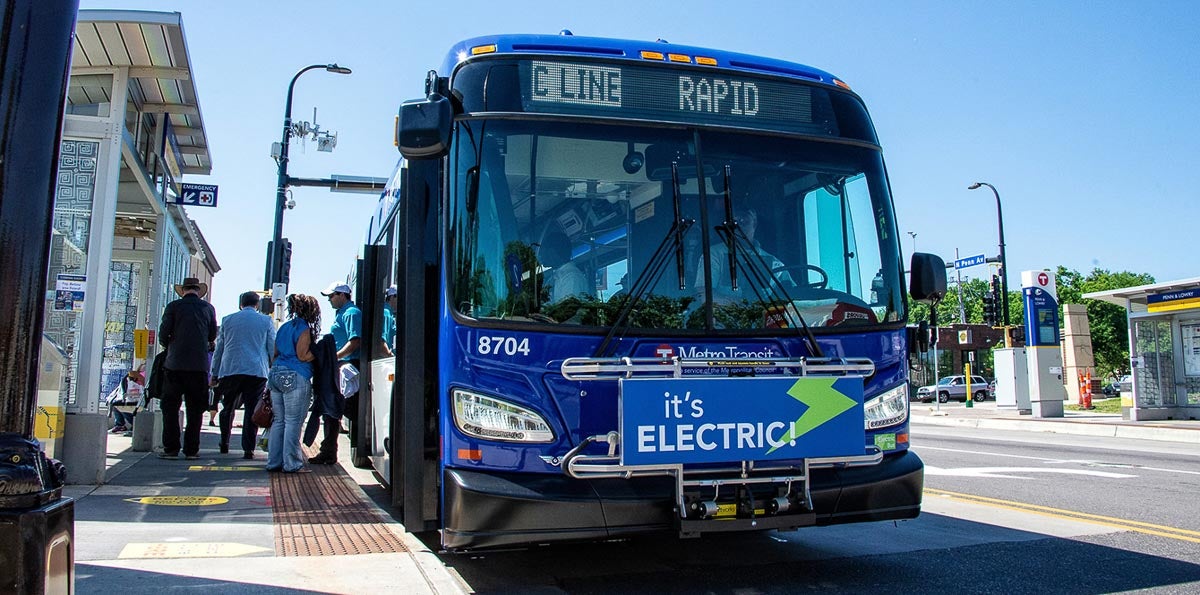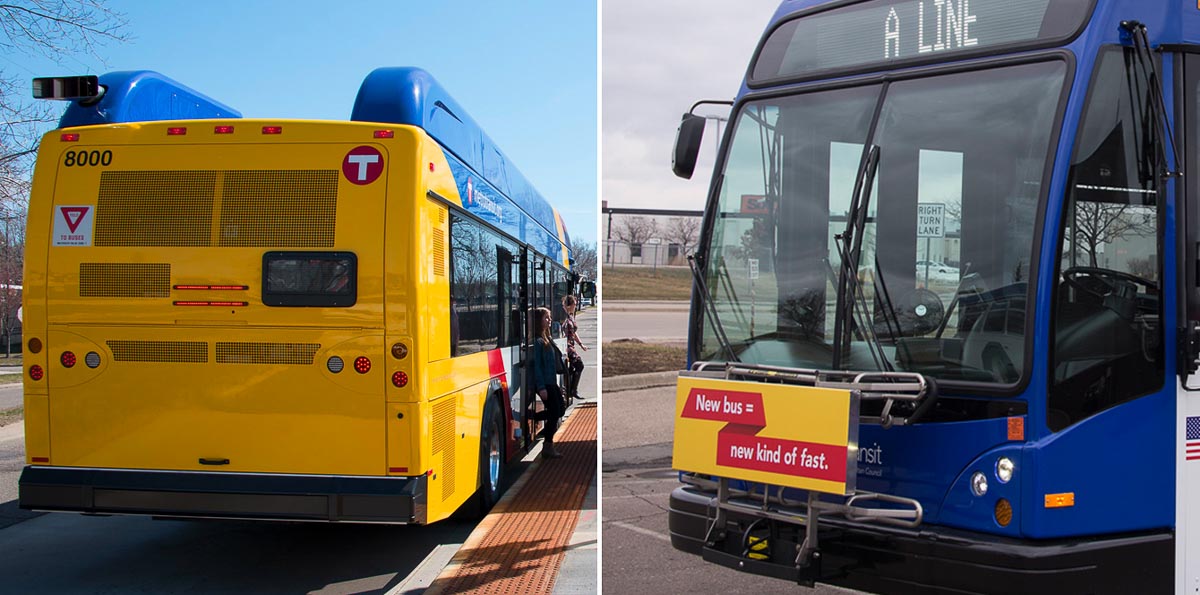Metro Transit made service faster on its “Arterial BRT” routes by increasing service frequency, putting stops farther apart and using traffic-signal priority as well as implementing off-board fare payment and all-door boarding. However, unlike Houston METRO’s planned BRT service, these routes don’t use designated bus lanes. The agency is also building a highway BRT route — the Orange Line — and has plans for a 10-mile dedicated BRT line called the Gold Line, which is expected to begin service in 2024.
To help readers better understand the bus rapid transit (BRT) approach, Urban Edge is running a series of posts from transit experts exploring what BRT will mean for the future of the transportation system in the Houston metropolitan area. In part three of the four-part series, Metro Transit representatives detail the implementation of BRT in the Minneapolis-St. Paul region and the successes and challenges that resulted.
The introduction of bus rapid transit (BRT) service in the Twin Cities shows the profound and immediate impact that can be made when fast, frequent and reliable service is combined with an improved waiting and on-board experience.
The fourth and final part of our series on bus rapid transit will run Feb. 11.
Read part one by Kyle Shelton, deputy director of the Kinder Institute for Urban Research, and part two from transit advocate and expert Christof Spieler.
While Metro Transit’s local and express bus ridership in the Minneapolis-St. Paul area has declined, average weekday ridership in the corridors served by the agency’s METRO A Line and METRO C Line has increased by more than one-third since BRT service began. Similar ridership gains have been seen on Saturdays and Sundays.
The primary features of Metro Transit’s BRT service directly respond to customers’ top priorities. They are:
► Fast, frequent and reliable service. Trips operate at least every 15 minutes throughout the day and well into the evening, reducing the need to plan trips in advance. Service is sped up through a combination of off-board fare payments, all-door boarding and wider stop spacing. Reliability has been improved through transit-signal priority, which allows buses to request green lights at certain intersections.
► High-quality boarding areas. All BRT stations feature on-demand heat, light, ticket-vending machines and digital signs that provide real-time predicted trip-departure information. Stations also have emergency call buttons and cameras. Dedicated maintenance staff members ensure boarding areas remain clean and clear of snow.
► Comfortable and accessible buses. Specially designed BRT buses allow customers to board or exit out of any door. On the C Line, customers who use mobility devices may secure themselves. The C Line’s fleet of 60-foot buses also includes the Twin Cities’ first eight battery-electric buses.

The C Line, which currently is one of two bus rapid transit lines running in the Twin Cities, opened in 2019.
Photo by Metro Transit
More BRT lines are planned
The A Line, which opened in 2016, and the C Line, which opened in 2019, are the first of many BRT lines planned for the region’s busiest transit corridors. Future BRT lines will offer the same combination of quality service and stations. Future BRT services may also benefit from the expanded use of bus lanes and electric buses.
Partial funding has been secured for three additional BRT lines, including one that will substantially replace Metro Transit’s busiest local bus route. Future BRT lines are being examined and prioritized as part of a larger study focused on a host of future bus network improvements.
As the region’s BRT service and light rail system expand, customers will have an even greater ability to travel efficiently to many of the region’s most popular destinations, including downtown Minneapolis and downtown St. Paul.
BRT corridors are also becoming attractions of their own. More than one-third of the region’s development has occurred in corridors served by high-frequency transit, including the A Line and C Line corridors. Combined, these corridors represent just 3% of the region’s total land.
Dealing with some bumps in the road
Like any major undertaking, the introduction of BRT hasn’t been without its challenges.
Capital funding had to be secured from local, state and federal sources. Construction had to be coordinated with many state and local partners and neighboring residents and businesses were impacted by the construction of new stations and related roadway improvements.
Local bus service was altered in ways that presented trade-offs for some customers. New operating procedures and training also had to be developed.
Like any service that operates in mixed traffic, road construction, congestion and weather are also ongoing challenges. While the A Line has become a popular way to get to the Minnesota State Fair, event-related traffic significantly delays service when the fair is underway.
The adoption of electric buses has presented some difficulties, too. While service was never disrupted, issues with charging equipment led Metro Transit to temporarily remove electric buses from operation and use other fleet vehicles instead.
A strong coalition is key
While there have been some challenges, BRT’s remarkable popularity is impossible to ignore. In addition to strong ridership, recent surveys have found that Metro Transit’s BRT customers are generally more satisfied than those who use other bus services.
As the future of BRT is explored in Houston, a key piece of advice is a very common one: Recognize, value and maintain relationships with key partners, customers and community members. Together, this strong coalition can help champion new investment, mitigate construction impacts and ensure that BRT, once implemented, is a valued community asset.

